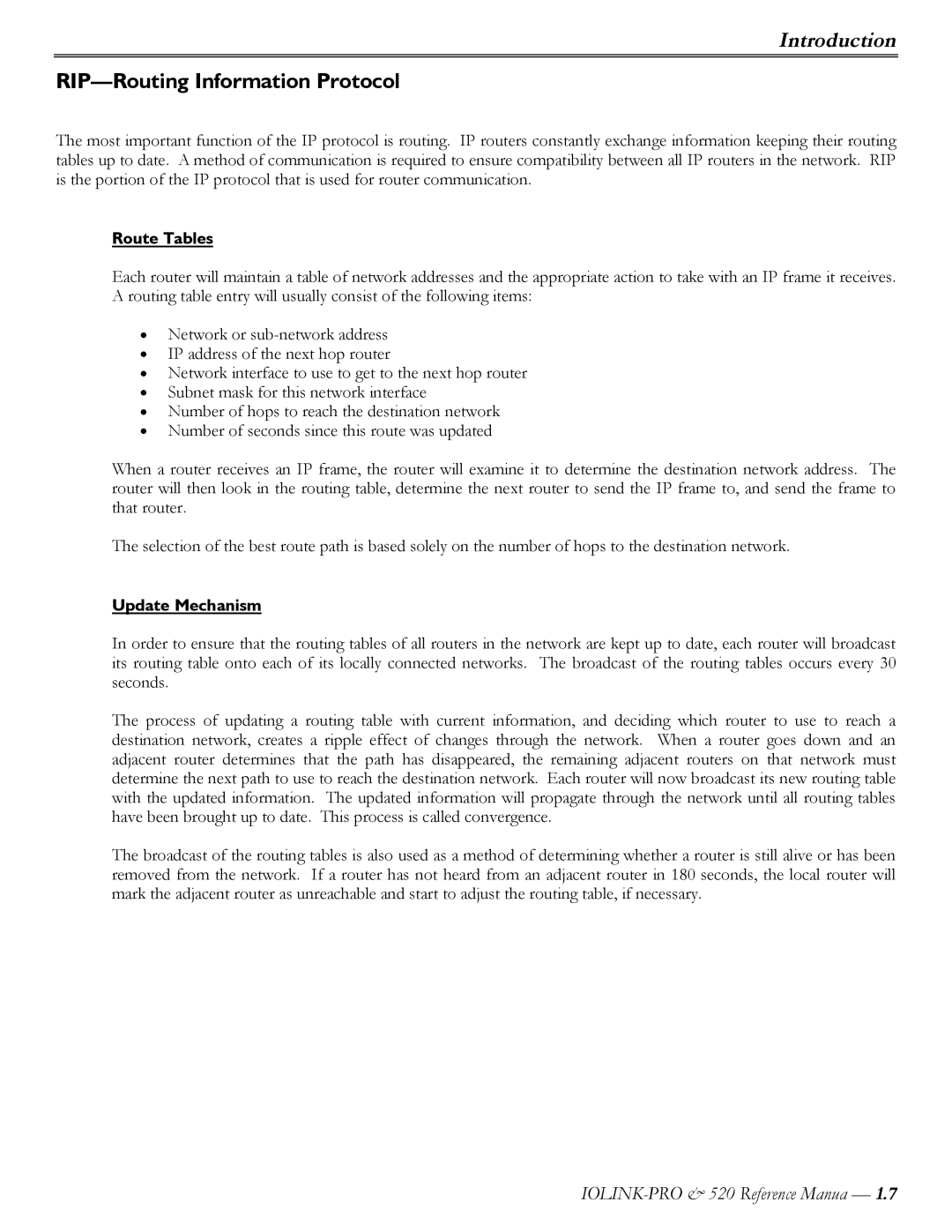Introduction
RIP—Routing Information Protocol
The most important function of the IP protocol is routing. IP routers constantly exchange information keeping their routing tables up to date. A method of communication is required to ensure compatibility between all IP routers in the network. RIP is the portion of the IP protocol that is used for router communication.
Route Tables
Each router will maintain a table of network addresses and the appropriate action to take with an IP frame it receives. A routing table entry will usually consist of the following items:
•Network or
•IP address of the next hop router
•Network interface to use to get to the next hop router
•Subnet mask for this network interface
•Number of hops to reach the destination network
•Number of seconds since this route was updated
When a router receives an IP frame, the router will examine it to determine the destination network address. The router will then look in the routing table, determine the next router to send the IP frame to, and send the frame to that router.
The selection of the best route path is based solely on the number of hops to the destination network.
Update Mechanism
In order to ensure that the routing tables of all routers in the network are kept up to date, each router will broadcast its routing table onto each of its locally connected networks. The broadcast of the routing tables occurs every 30 seconds.
The process of updating a routing table with current information, and deciding which router to use to reach a destination network, creates a ripple effect of changes through the network. When a router goes down and an adjacent router determines that the path has disappeared, the remaining adjacent routers on that network must determine the next path to use to reach the destination network. Each router will now broadcast its new routing table with the updated information. The updated information will propagate through the network until all routing tables have been brought up to date. This process is called convergence.
The broadcast of the routing tables is also used as a method of determining whether a router is still alive or has been removed from the network. If a router has not heard from an adjacent router in 180 seconds, the local router will mark the adjacent router as unreachable and start to adjust the routing table, if necessary.
